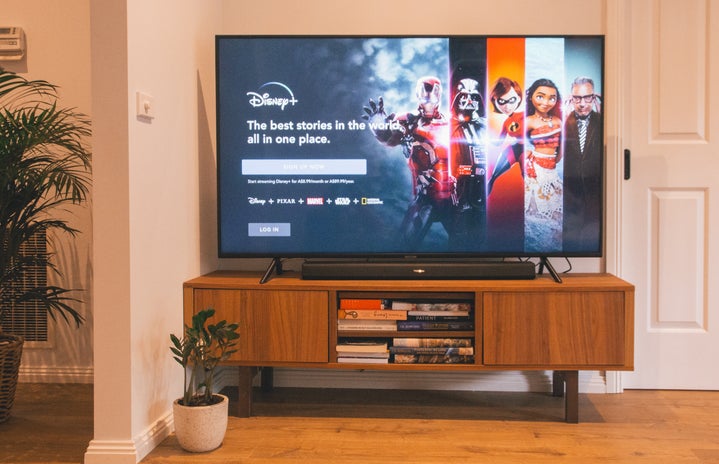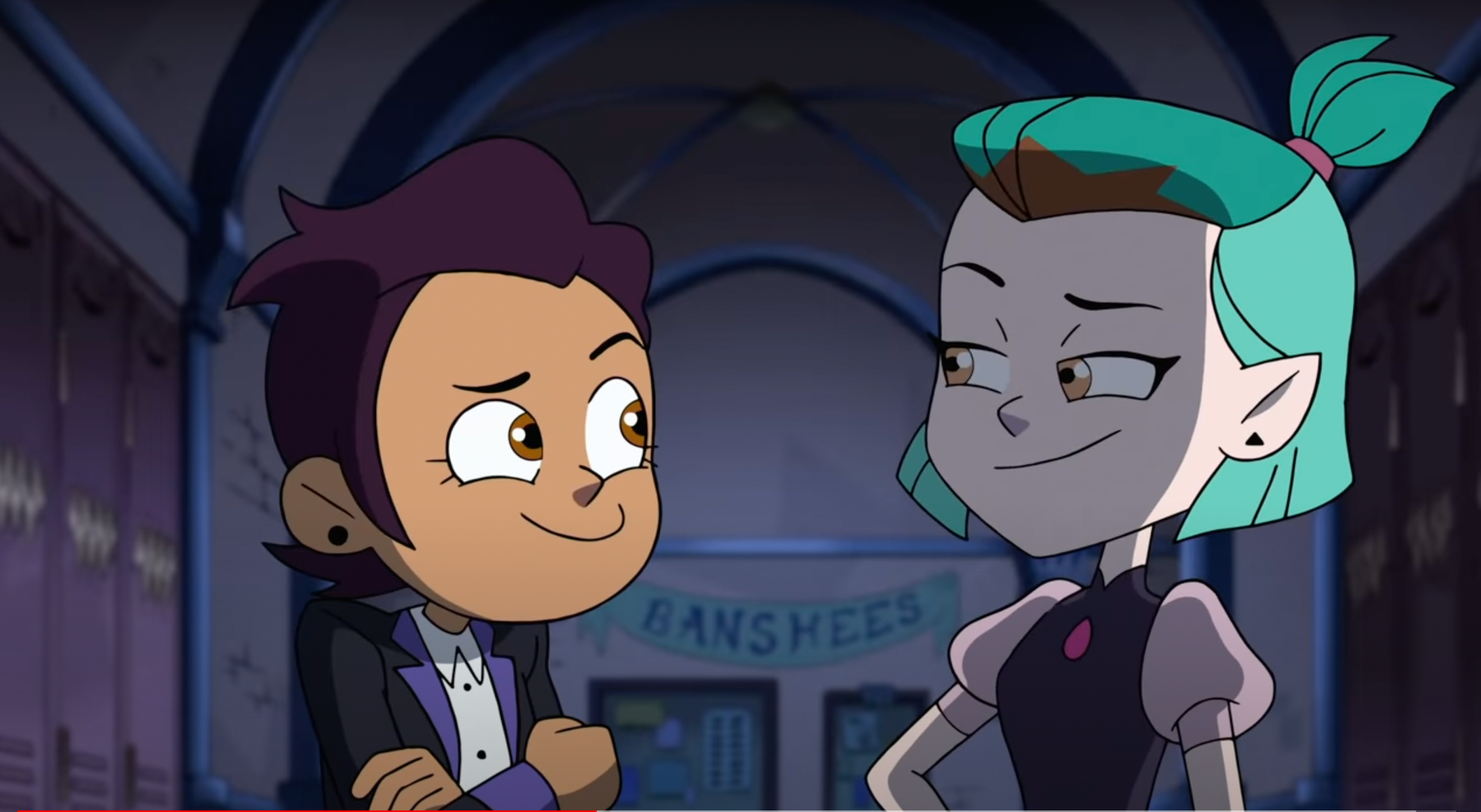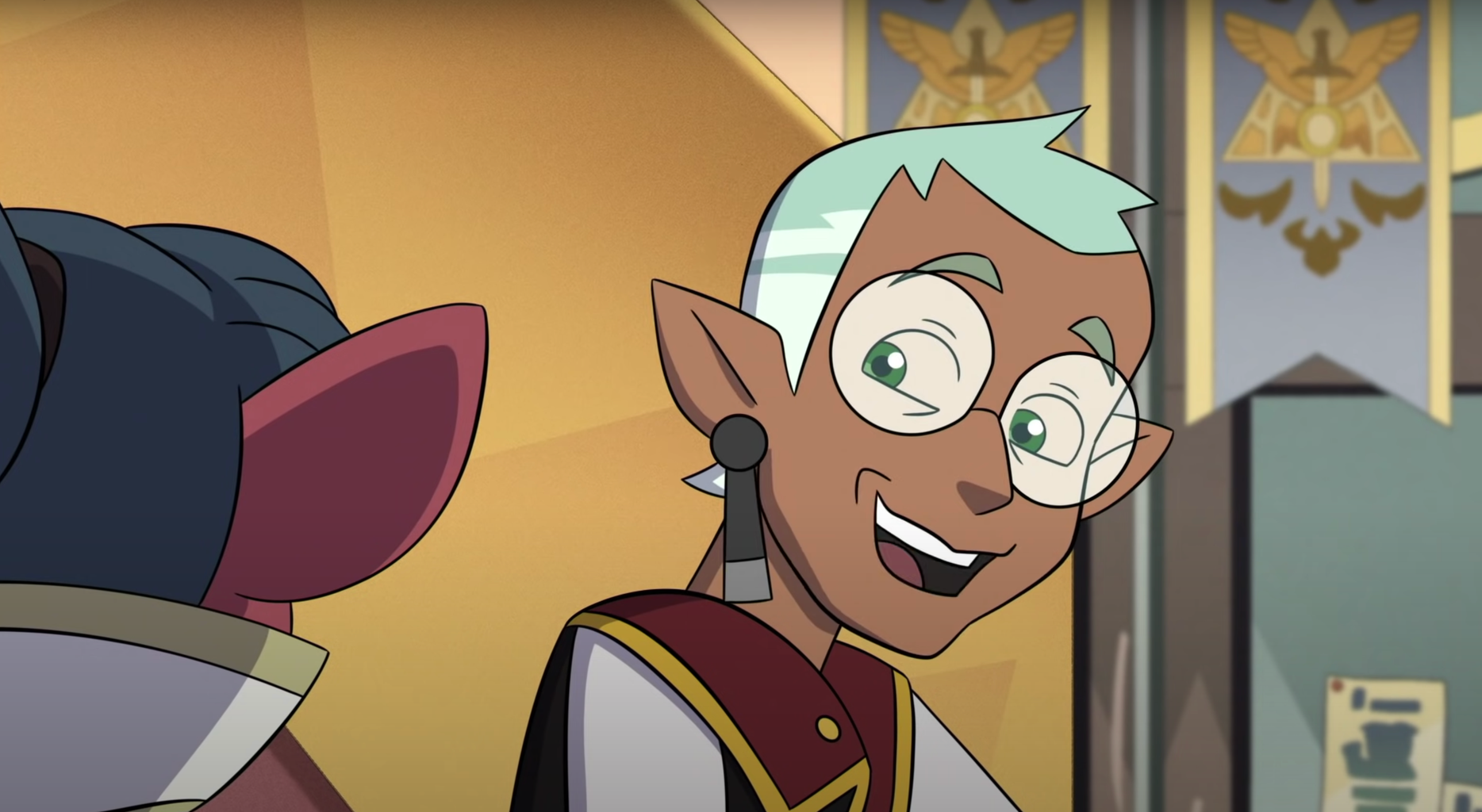It’s not news that media depicting LGBTQ+ people and relationships has been subject to censorship. The “Hays Code” from 1930-1968 restricted film content to what was deemed “appropriate” and “moral”—so in the films spanning this period, queer-coded characters were either obscured, written out, or depicted as the villains who must inevitably be punished by the end of the film. Today, on the other hand, queer characters do exist in film more visibly, but they’re often hypersexualized. Lesbian relationships are frequently fetishized and constructed for the male gaze, as a way to simply capture men’s attention, while gay men and trans people (women in particular) have long been framed as sexual predators or overly promiscuous—and in each of these cases, the nuance and personal connection of queer relationships is lost. This erasure and hypersexualization makes good queer representation difficult to find—especially in kids’ media.
But just because it’s hard to find doesn’t mean it doesn’t exist. The Owl House (created by Dana Terrace, who also worked on Gravity Falls and DuckTales) is a show that I go back to again and again for its unique and loveable characters, engaging storylines, and excellent LGBTQ+ representation. First released in January 2020 and now streaming on Disney Plus, this animated show was initially marketed for younger kids, but has since attracted a wider audience of teens and adults as well. It follows an imaginative young teen named Luz Noceda, who accidentally discovers a portal to a magical world called The Boiling Isles just before she’s about to be sent to a stifling summer camp. Jumping on the opportunity to explore rather than get stuck at “Camp Reality Check,” Luz hurtles headfirst into adventures with her newfound witch mentor, Eda, and feisty demon friend, King, as she tries to learn magic.
One of the things I love about this show is that it treats its queer representation as incidental—a natural part of the fabric of the many different types of love the characters on the show express. There’s familial love in Luz’s found family of Eda, Hooty, and King; platonic love for her friends Gus and Willow; and—of course—romantic love between her and Amity. The show normalizes queerness and queer relationships, giving its characters the space to be sweet and beautiful, as well as to mess up and make amends.
In the show’s first season, Luz is shown to develop crushes on both boys and girls. One of the show’s most popular episodes, “Enchanting Grom Fright,” sees her friend Amity tasked with defeating a monster that tries to escape every year on Grom Night (the Boiling Isles’ version of prom) by showing its combatants their worst fears. While trying to help Amity, Luz sees her worst fear: rejection from the person she wants to ask to Grom. Luz (in a fantastic tuxedo/tutu combo) offers to go to Grom with her instead, and the two of them defeat the monster together. Only after is it revealed to the audience in a discarded note that it was actually Luz that Amity wanted to ask out.
Their relationship develops further in season 2 as they officially start dating. They go through some of the typical ups and downs of a new relationship, and the more time they spend together, the more they learn about each other and how to best offer their support. For example, in “Follies at the Coven Day Parade,” Luz fibs about her success in contacting her mom, then accidentally leaves her phone (which has video proof of their interaction) with Amity. Amity knows she could watch the video to find out the truth herself, but instead she leans on her friend Willow to help her use self-control and avoid invading Luz’s privacy. When she’s able to connect with Luz again and return the phone, she simply asks her for the truth—and Luz is then able to open up and explain why she was so scared to share it.
Luz and Amity aren’t perfect, but they always own up to their mistakes and use what they’ve learned from each other to strengthen their own relationships, not only with each other, but also with the people around them.
Another way The Owl House makes LGBTQ+ representation accessible to their audience is through the character of Raine Whispers, the non-binary head of the Bard Coven—and Eda’s ex. Raine does not have any huge coming out scene, no one ever mixes up their pronouns or comments on their gender identity—they just simply exist as they are. The show spends far more time exploring their complex relationship with Eda, their stage fright, and their selflessness and bravery in their position as both a rebellion leader and a Coven head.
In The Owl House, queer people and relationships simply exist as part of the natural landscape. The show thrives at allowing authentic, sweet LGBTQ+ representation room to breathe and grow naturally, making it easy for young people to find themselves in what they see on screen.
The film industry is still dealing with the legacy of the Hays Code and issues with good queer representation, and it has a long way to go—but The Owl House is definitely a step in the right direction.





